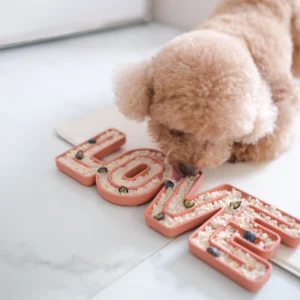
Health & Wellbeing
When to Put Your Dog Down: Finding the Right Time to Say Goodbye
Know when saying goodbye may be the best option for your best friend.
Sophia Gillis has been working in a professional capacity with dogs and cats for over 13 years as a dog behaviourist, veterinary nurse and practice manager.
Sophia currently runs her own business in the Eastern suburbs of Sydney with her trusted team, providing behavioural consultations and dog training, as well as running a doggy daycare service focusing on controlled socialisation.
How to know when to put your dog down? It’s the question all loving pet parents dread – and will inevitably find ourselves asking one day.
Before becoming a dog behaviourist, I was a veterinary nurse and practice manager for 11 years. And one of the hardest parts of the job was helping clients make the call no one ever wants to make – deciding when to euthanise your beloved pet.
This is undoubtedly an emotional topic to broach. But it’s one you don’t have to face alone.
To help you decide if it’s the right time to put your dog to sleep, I have provided a list of questions to ask yourself, based on your dog’s health and your personal circumstances.
You’ll then find a list of common questions on pet euthanasia, so you know what to expect when the time comes.
Please take my hand, and let me guide you through this difficult process together.

When to Put Your Dog Down: How to Know it’s Time
TOPICS WE’LL COVER
Through sharing my personal experience as a pet owner, and professional experience as a veterinary nurse, my aim is to help you make a compassionate, well-informed decision for your best friend.
Most common reasons dogs are put down
Firstly, let’s take a look at the most common reasons to euthanise a pet.
These include senior dogs who have reached their lifespan, terminal illness, and to avoid prolonged pain and suffering.
There are also situations when putting a dog to sleep is the only humane course of action you can take, such as when your dog is:
- Suffering severe injuries with slim chances of survival
- Enduring persistent pain that can’t be effectively managed
- Merely enduring existence without experiencing a meaningful quality of life
- Advanced in age and grappling with significant challenges
Is it the right time? Questions to consider
Determining when to euthanise your dog is a personal and emotional decision.
Your veterinarian will offer you guidance based on your dog’s quality of life, but making the call ultimately lies with you.
To help you understand if it’s the right time to put your dog to sleep, here are a list of signs to look for – and questions to ask yourself.
– ‘Is my dog still eating and drinking?’
Your dog might not have many teeth left, or have poor eyesight and hearing and that’s all okay.
But are they able to eat food and drink water on their own?
Are they struggling to lift their heads or stand upright to eat, or keep food down without throwing it back up?
– ‘Is my dog defecating and urinating normally?’
If your dog has developed gastrointestinal issues and constantly has bouts of painful diarrhea or constipation – or strains to pee – this can cause them significant discomfort.
Their privates may also get red raw from you assisting in helping to clean them up.

– ‘Is my dog still mobile?’
Can your dog walk unassisted? Can they still hold up their body weight to take slow walks at the park and sniff various grass patches and the base of trees?
Dogs benefit greatly from smelling the world around them and have over 300 million scent receptors.
By smelling things, they gather plenty of information – which ultimately provides great comfort and joy, and reduces anxiety for dogs.
– ‘Is my dog still happy, and has a good quality of life?’
Yes, your dog might still be alive. They might be spending more and more time in their cosy dog bed, under warm covers you’ve tucked around them, surrounded by their favourite toys.
You might be very happy to hand feed them, medicate them daily, and assist in holding them up when they need to toilet.
But…do they still find joy in life?
Do their eyes still light up to take a dog treat from you?
Do they still make little huffy noises or bark in excitement when they spot you coming home from work?
Do they still wag their tail in anticipation when going out for a walk, be it on their own feet, or in a pet stroller?
Or…do they not wake up easily when you call out to them, or gently shake them awake?
Do they prefer to be left alone a lot more than they ever used to?
Answering these questions honestly with yourself will help you determine your dog’s quality of life.
– ‘Does my dog randomly vocalise loudly, or walk around in circles?’
I have cared for Bagel, my lhasa apso, Nellie, my border collie x, and Madame Fifi, my tabby cat – and seen them to the ripe old ages of 16.5, 16.5 and 17.5.
Together, they had a variety of medical conditions: degenerative heart valve disease, osteo-arthritis, idiopathic vestibular syndrome, and canine and feline cognitive dysfunction (the dog equivalent of dementia).
As you can imagine, this involved constant daily management to ensure their safety and comfort.
Many adjustments were made in my life to allow this to happen. I did this willingly, but I can’t deny this also brought on a significant amount of stress and heartache.
I was their sole provider while working long hours, 7 days a week. This meant I needed to engage the help of various people to regularly check in on them, to make sure they weren’t stuck behind a doorway, or stuck lying in their own bile.
Canine cognitive dysfunction is also heartbreaking to witness. As a disease that causes psychological changes in the brain, it results in loss of memory, motor function and learned behaviours.
Your pet might forget where they are and walk around in circles, or press their forehead up against a wall. They may also stand and stare into the distance for long periods, or lick the air above their water bowl.
Seeing this occur is upsetting and can take an emotional toll. And while it’s possible to adjust your life and home to create a safer space for your pet, this is nevertheless an important question to consider.

– ‘Is my dog in pain?’
This is something you might not be able to correctly assess without the help of a veterinarian.
Some dogs can be very stoic and endure pain well, but this doesn’t mean that they aren’t experiencing pain on a daily basis.
– ‘Does my dog have a chronic illness, and are they coping well with treatment?’
Depending on the situation, available treatment options might not always be the best option for your pet.
For example, if your dog has severe anxiety and attachment issues, being placed inside a hospital cage while waiting at the vet to get their treatment done may cause them significant distress.
Likewise, if your dog is reactive and doesn’t like being handled, having to restrain them to get their bloods taken regularly, or hooking them up to intravenous fluid pumps, might be a difficult situation to put them in.
– ‘Do I have the capacity to care for my aging dog with medical issues and high-level needs?’
Let’s discuss this very delicate question.
Everyone’s financial status and lifestyles are different. It is not up to anyone to judge you if you plainly acknowledge that you are struggling with too many commitments.
You love your dog and are dedicated to them. You’ve provided them with love and care for the entirety of their lives.
But…you have a full-time job, or you have young children who require most of your time. Perhaps you’re experiencing the stress of the current economy and are struggling financially.
Or maybe you have fallen ill yourself, and cannot physically look after your dog to the best of your ability.
Sometimes, sadly, this is the reality of life. It’s easy to point fingers at others, but no decent pet parent makes the decision to put down their dog easily.
It’s why asking yourself this very tough question is so important.
– ‘Am I keeping my dog alive for my benefit? Or am I keeping my dog alive because they still seem happy?’
During this difficult time, I would kindly encourage you to ask yourself this final important question.
No matter the circumstances, the thought of having to put your dog down at any stage in their life is awful. And sadly, no one can truly prepare themselves for the inevitable loss of their pet.
The simple truth is, a life-cycle has a start and an end. And as human beings with compassion, we find ourselves in a unique position where we can help determine when that end is for our pets.
Many clients have told me they’re not ready to say goodbye, and that’s a perfectly understandable feeling.
But here’s the crucial point: delaying your final goodbye may inadvertently cause prolonged pain and suffering to your much loved pet.

Making the decision to euthanise your dog
Should you make the difficult – but compassionate – decision to put your dog down, booking in a euthanasia appointment is usually done in two stages.
At a consultation with your veterinarian, and then with your family.
A veterinarian is the best person to assess your dog’s quality of life. They will address whatever ongoing medical condition your dog might be experiencing, and their level of discomfort or pain.
Following this, having a conversation with your family to emotionally prepare them for the loss of your pet is equally as important.
Pet euthanasia: Common questions
What is humane pet euthanasia?
Humane pet euthanasia is an elective procedure that allows a pet to pass on in a painless, compassionate and peaceful manner.
This procedure is usually done at a veterinary practice. It generally involves giving a mild sedation prior to placing a cephalic catheter into their front leg, and administering an overdose of an anesthetic.
Humane euthanasia is for pets that are sick or have reached their life span. It’s not for those wanting to re-home a dog.
Asking a veterinarian to euthanise your dog in a re-homing situation is not something veterinarians will be willing to do, as this goes against the legal and ethical guidelines as part of their Veterinarian’s Oath.
What to expect at the euthanasia appointment?
Usually pet euthanasia appointments are made in advance, but this may vary between veterinary clinics.
If putting your pet to sleep at a veterinary clinic, it’s a good idea to bring their dog bed or blanket to make them comfortable.
Upon arrival, you’ll be ushered into a consulting room and given a pet euthanasia consent form. This gives legal approval to your vet to perform this procedure.
The pet euthanasia form usually offers three options for body care after your pet has passed away:
AFTERCARE ARRANGEMENTS FOR YOUR DOG
1. Home Burial
While it is not advisable to bring home the body of a pet that has had a lethal dose of anesthesia, veterinarians won’t stop you from doing so.
You’ll be advised that you will need to dig a grave at least 3 feet deep, in an area that ideally isn’t accessible to other pets.
If you would prefer to bury your pet at home, you might wish to consider these pet farewell burial kits.
2. General Cremation
This is where your dog’s body will be picked up by a pet crematorium and humanely cremated, along with other pets who have passed.
3. Private Cremation
A private cremation is where your dog is cremated separately from other pets, and their ashes returned to you in a week or two.
You will be given a range of pet memorial urns to select from, along with the choice of a personal inscription or meaningful pet loss quote.
What happens during the pet euthanasia procedure?
Once the pet euthanasia consent form is signed, a vet nurse will take your dog to the treatment room.
There a catheter will be placed into their forearm for easy access to their veins. Your vet will then usually administer a sedative to help keep your dog calm and relaxed.
Once this is done, the vet will bring your dog back, so you can have time to say your final goodbyes.
When you are ready, the vet will slowly administer the euthanasia injection. The effects of this are quick, and you should expect your dog’s body to go limp within 1-2 minutes.
As your dog’s body shuts down, it’s possible they may twitch, vocalise or express their bladder or bowels.
If this happens, it’s important to know your dog isn’t in any pain. This activity is due to your dog’s brain firing off electrical impulses and neurotransmitters to test their muscles as their body goes to sleep.

Can my dog be put down at home?
Many people choose to euthanise their pets in the privacy and comfort of their own homes, which is completely understandable.
If you would prefer to put your dog down at home where they are most comfortable and at ease, ask your veterinarian if they offer this service.
Depending on your location, dedicated home euthanasia services for terminally ill or elderly pets may be available.
Requesting pet memorial keepsakes
Understandably, many pet parents request a special memento to remember their best friend.
This is usually a snippet of their dog’s fur, or a paw print or nose print. Don’t be afraid to communicate any special requests with your vet or ask about the keepsakes they have available.
Many pet businesses also specialise in thoughtful and personalised pet memorial gifts, such as pet cremation pendants, shadow boxes or pet memorial stones.
Final thoughts: Reach out for support
The final thought I will leave you with today is this: you are not alone.
Knowing when to put your dog down is a painfully difficult decision, and it’s important you seek help and guidance to support you.
Reach out to friends and family. Speak to your vet or vet nurses who have all come to love your pet too. Get advice from a therapist or seek out a qualified pet grief counsellor.
I can’t tell you this won’t feel like one of the most heartbreaking times of your life. But what I can tell you, is that you’ll want to remember all the wonderful memories you’ve made with your pet over the years.
And it’s these memories that will remind you why you’ve made this kind and loving decision, on behalf of your much-loved pet.
Need to speak to a vet now?

Talk to a licensed veterinarian in minutes with Vetster, the top-ranked pet health app available 24/7.
Get professional guidance and receive a care and treatment plan, right from the comfort of your home.
It’s quick, convenient, and trusted by pet parents everywhere.
PET LOSS & PET GRIEF RESOURCES
AUSTRALIA:
Pet Loss Support: 1300 431 450
Griefline.org.au: 1300 845 745
Australian Centre for Grief & Bereavement: 1300 642 066
Vicky Nonas, Pet Grief Counsellor: bymyside.net.au
U.S.A:
Association for Pet Loss and Bereavement (APLB): aplb.org
Anti-Cruelty Society – Working Through Pet Loss Support Group: anticruelty.org
Animal Welfare Association (AWA) Pet Bereavement Group: awanj.org
FURTHER READING
‘Humane euthanasia in pets’ – The Australian Veterinary Association
‘How to cope with the death of your pet’ – The Humane Society
‘Walk me through a pet euthanasia procedure’ – Cornell Feline Health Center


Pretty Fluffy is the ultimate lifestyle destination for dog lovers. Discover the best designer dog brands and emerging small pet businesses, the latest dog accessories, healthy dog treat recipes, dog training tips and more. Thank you for being part of our dog-loving community!













 Pet Loss Condolences: What to Say When Someone Loses A Pet
Pet Loss Condolences: What to Say When Someone Loses A Pet  16 Heartfelt Dog Loss Poems For Comfort & Healing
16 Heartfelt Dog Loss Poems For Comfort & Healing  54 Touching Pet Loss Quotes & Pet Memorial Sayings
54 Touching Pet Loss Quotes & Pet Memorial Sayings  16 Pet Memorial Ideas & Gifts That Will Touch Your Heart
16 Pet Memorial Ideas & Gifts That Will Touch Your Heart  Navigating Pet Loss with Pet Grief Counselor Beth Bigler
Navigating Pet Loss with Pet Grief Counselor Beth Bigler
Comments are off for this post